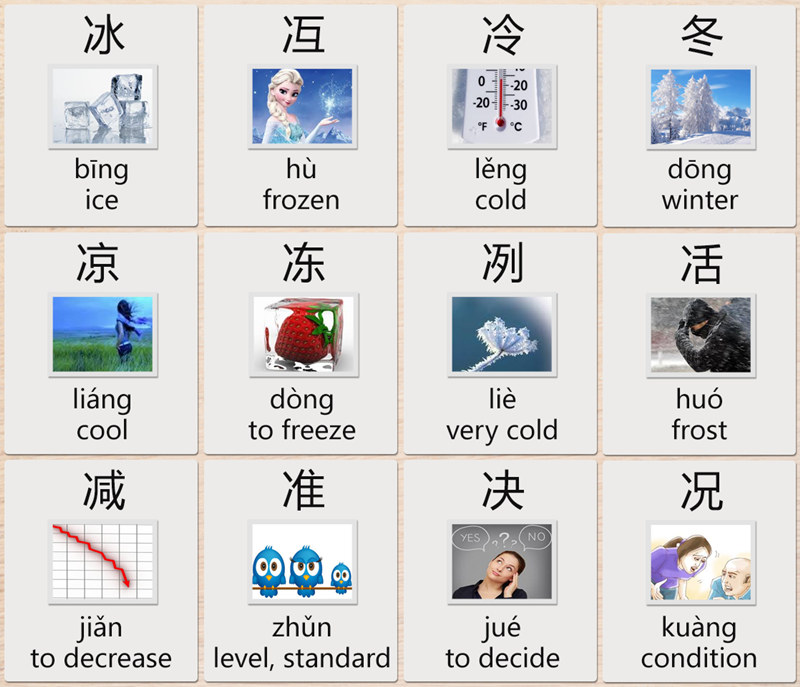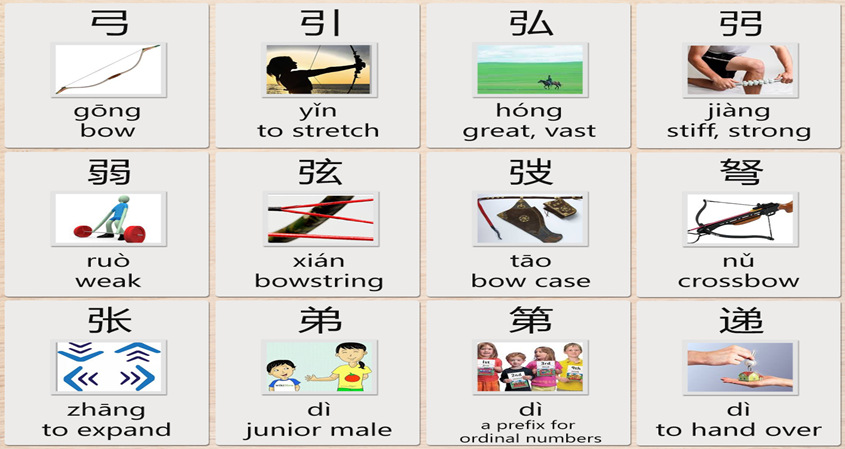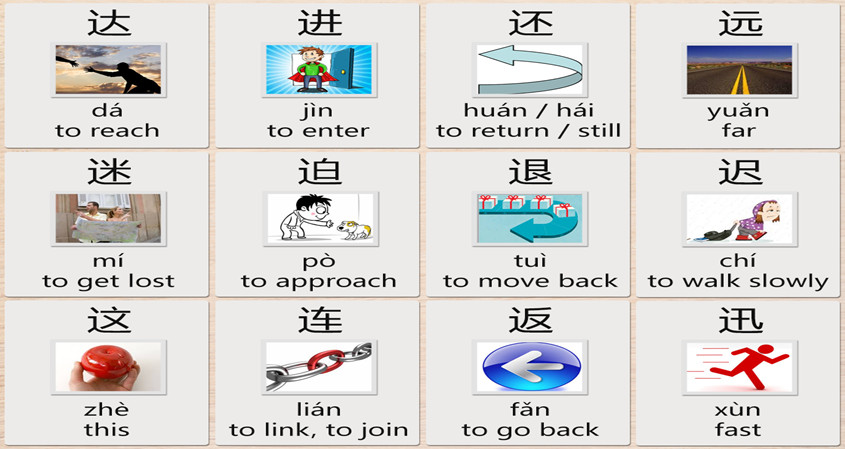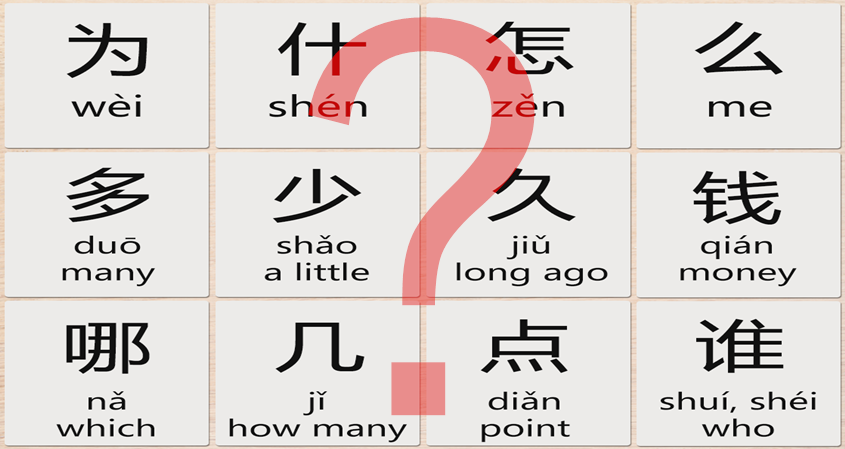Learn more “Ice” Radical Related Chinese Characters
Have you ever wondered how much the radical means in Chinese? For example, the “Ice” radical, which contains only two strokes and looks like two drops of water – 冫, has characteristics of what water is like and what it can do. The radical mainly appears on the left side of a character, there are some characters where it is on the bottom. The most well-known example is 冬 (meaning “winter”). In the Kangxi Dictionary, one can find more than 115 characters listed under the “ice” radical. Some of them are directly related to coldness, frost and freezing like:
- 冫+ 水 (shuǐ) = 冰 (bing1) (ice)
- 冫+ phonetic component 令 (lìng) = 冷 (lěng) – cold
- 冫+ phonetic component 东 (dōng) = 冻 (dòng) – cold
Here is also a visual chart of how the ice radical is used in Chinese characters.
However, there are Chinese characters, which have this radical that may be seen as part of some commonly used words. It will not completely relate to how water feels or what it is state it is. Here are a couple examples of commonly used words:
- 情况 (qíng kuàng) – situation, circumstances
况 means “condition” but initially the meaning was “cold water”. 兄is phonetic in this case.
- 减价 (jiǎn jià) – to reduce price, to discount
减 derives from ice 冫 and phonetic 咸. The character means, “to decrease” (An act of pouring out like a waterfall).
- 决定 (jué dìng) – to decide, to resolve
决is from ice 冫 and phonetic夬 (also means “to decide”)
As you can see, the radical ice can be directly related to the ice and its characteristics, but it can also be indirect. It is intriguing how the Chinese language is design to be connected with the radicals to build on simple ideas to express complex concepts. We hope you enjoyed learning about the ice radical. We will see you next time!






This is interesting how radicals build concepts. I also like your picture choices.
You have done a great job in putting together groups of characters with some brief explanation to help the learner understand the characters. Of all the material I have come across this is the most helpful in getting me started with learning Chinese characters. Tank you and I hope you keep the material coming.
I’ve been searching good way to learn Chinese so long. But your way of teaching is the best version for me. I would really appreciate your effort for us. Thank you!!!!